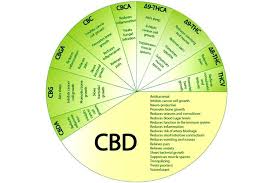
Breaking News
 China Will Close the Semiconductor Gap After EUV Lithography Breakthrough
China Will Close the Semiconductor Gap After EUV Lithography Breakthrough
 The Five Big Lies of Vaccinology
The Five Big Lies of Vaccinology
 Large global study analyzing data from 192 countries has sparked intense debate by suggesting...
Large global study analyzing data from 192 countries has sparked intense debate by suggesting...
Top Tech News
 EngineAI T800: Born to Disrupt! #EngineAI #robotics #newtechnology #newproduct
EngineAI T800: Born to Disrupt! #EngineAI #robotics #newtechnology #newproduct
 This Silicon Anode Breakthrough Could Mark A Turning Point For EV Batteries [Update]
This Silicon Anode Breakthrough Could Mark A Turning Point For EV Batteries [Update]
 Travel gadget promises to dry and iron your clothes – totally hands-free
Travel gadget promises to dry and iron your clothes – totally hands-free
 Perfect Aircrete, Kitchen Ingredients.
Perfect Aircrete, Kitchen Ingredients.
 Futuristic pixel-raising display lets you feel what's onscreen
Futuristic pixel-raising display lets you feel what's onscreen
 Cutting-Edge Facility Generates Pure Water and Hydrogen Fuel from Seawater for Mere Pennies
Cutting-Edge Facility Generates Pure Water and Hydrogen Fuel from Seawater for Mere Pennies
 This tiny dev board is packed with features for ambitious makers
This tiny dev board is packed with features for ambitious makers
 Scientists Discover Gel to Regrow Tooth Enamel
Scientists Discover Gel to Regrow Tooth Enamel
 Vitamin C and Dandelion Root Killing Cancer Cells -- as Former CDC Director Calls for COVID-19...
Vitamin C and Dandelion Root Killing Cancer Cells -- as Former CDC Director Calls for COVID-19...
 Galactic Brain: US firm plans space-based data centers, power grid to challenge China
Galactic Brain: US firm plans space-based data centers, power grid to challenge China
The chemistry behind cannabinoids explains how CBDs are saving lives

(Natural News) Scientists are finally beginning to uncover some of the chemical mechanisms underlying the powerful medical benefits of marijuana and its cannabinoid compounds.
The breakthrough came with the discovery of the body's endocannabinoid system, a biological system based around signaling molecules highly similar to many of the phytocannabinoid (plant-based cannabinoid) compounds found in marijuana (cannabis). Cannabinoid receptors are found on nearly every cell in the body, enabling the endocannabinoid system to play a key role in regulating everything from sleep and metabolism, to appetite and immune function.
Of the more than 500 identified chemicals naturally present in the cannabis plant, at least 85 are cannabinoids.
Cannabinoids restore the body's natural balance
Two classes of cannabinoid (CB) receptors have been discovered in the body, though there may be others. CB1 receptors are mostly found in the nervous system, the endocrine system (glands), the internal organs and the connective tissues and gonads. CB2 receptors are mostly found in cells and organs that play a role in the immune system.
One of the endocannabinoid system's main functions appears to be the maintenance of homeostasis – that is, keeping the internal environment of the body stable even as the external environment is constantly changing.
For example, when the body experiences an injury it reacts with a variety of immune responses – such as the inflammatory response – that are meant to heal the injury and repel dangerous pathogens. Research now suggests that when endocannabinoids bind to CB receptors at injury sites, they function to tamp down this immune response – thereby helping prevent an overactive inflammatory or other immune response that could end up producing more injury or even an autoimmune disorder.
Cannabinoid receptors on tumor cells appear to serve a similar role in fighting cancer. Endocannabinoids that bind to these locations help trigger cell death, balancing out the tumor's previously unregulated cell replication.
Even the FDA admits the benefits of THC … sort of
Phytocannabinoids from the cannabis plant also bind to CB receptors, and can thereby give a boost to the systems the body uses to maintain its own health.
The two most well-studied phytocannabinoids are tetrahydrocannabinol (THC), which is responsible for the marijuana "high," and cannabidiol (CBD), which has no psychoactive effects, and also seems to dampen the psychoactive potency of THC. Other identified phytocannabinoids include cannabinol (CBN), a mildly psychoactive chemical produced from the oxidation of THC, and cannabigerol (CBG), a non-psychoactive compound that reduces pressure within the eye, and may be partially responsible for marijuana's effectiveness as a glaucoma treatment.

 This is why RAM costs so much
This is why RAM costs so much

